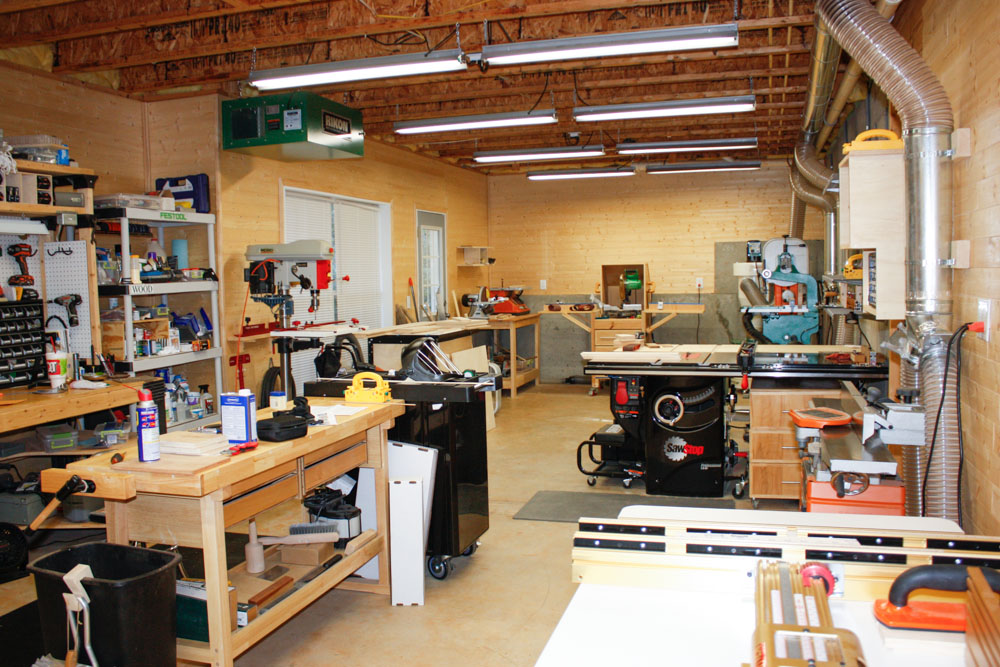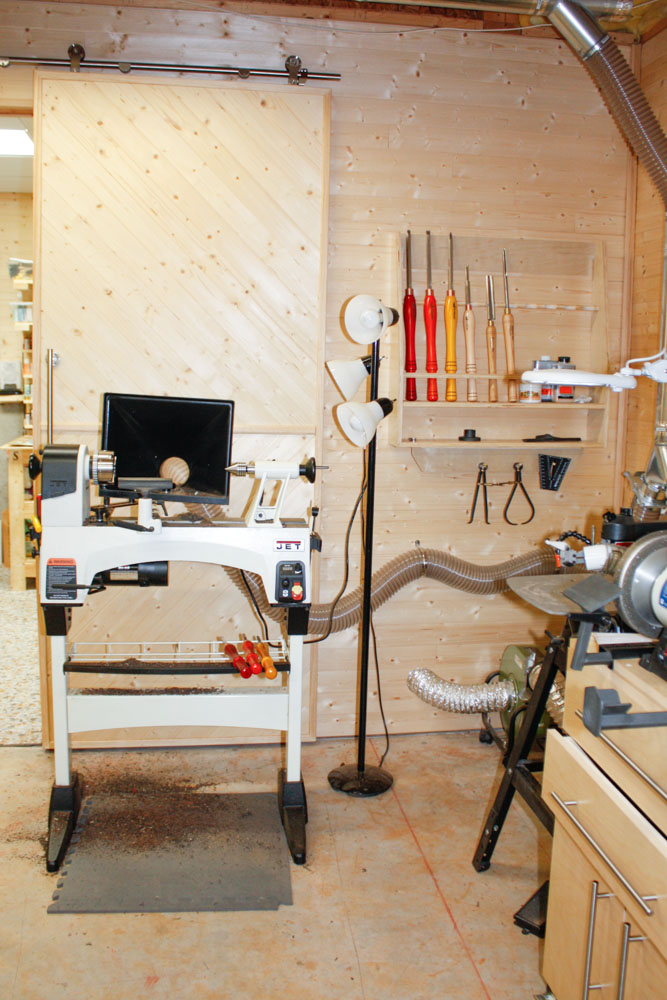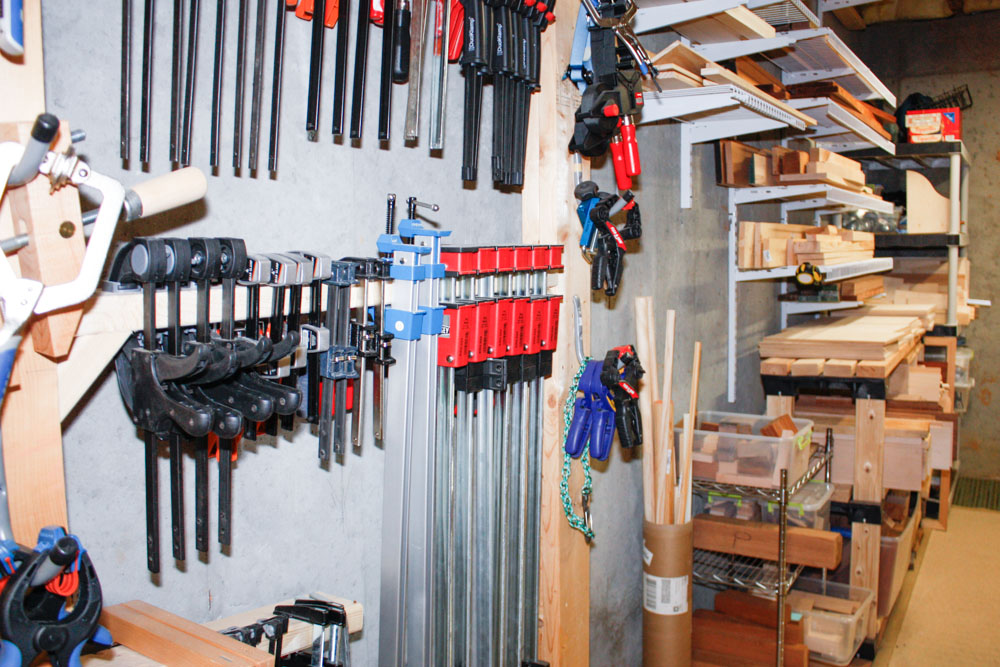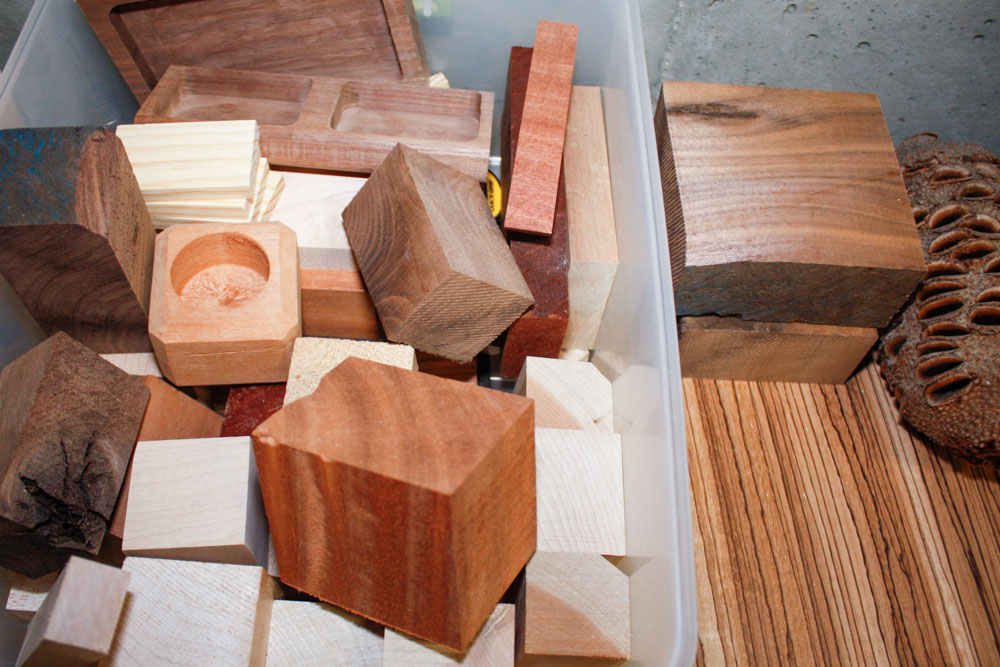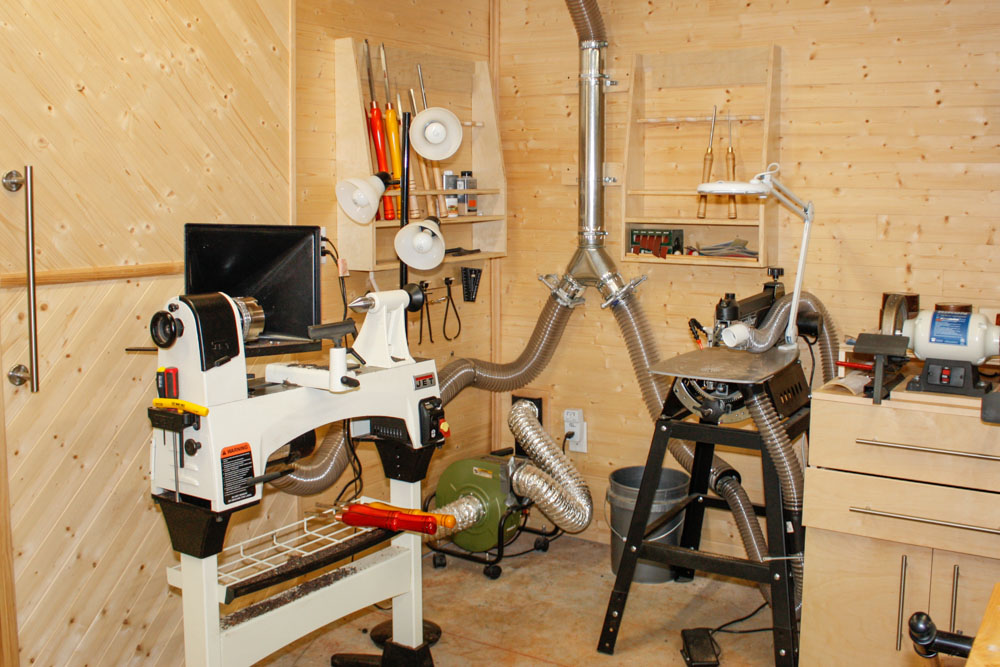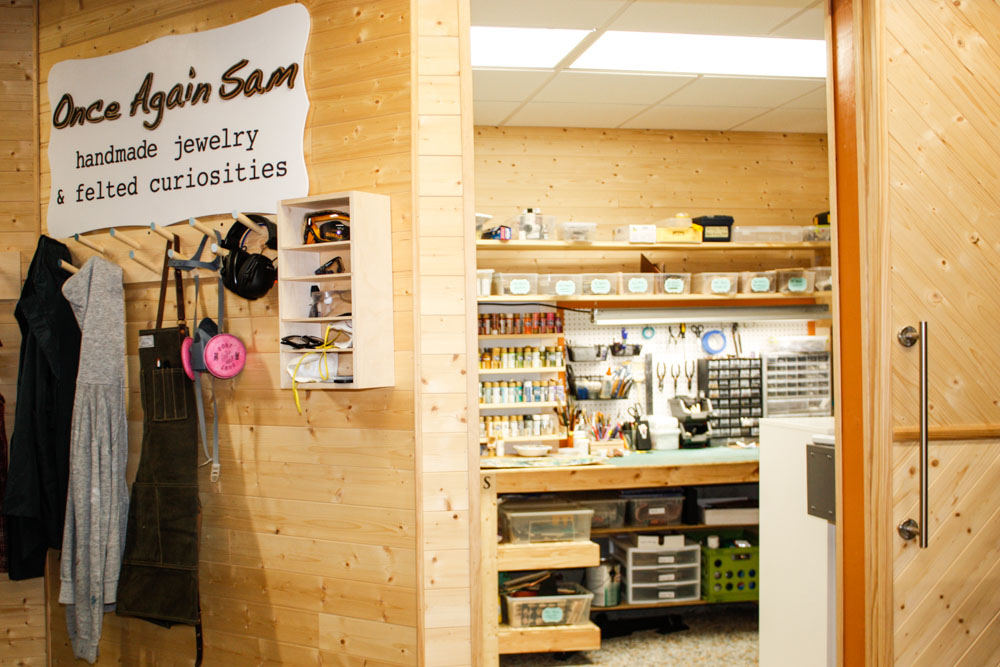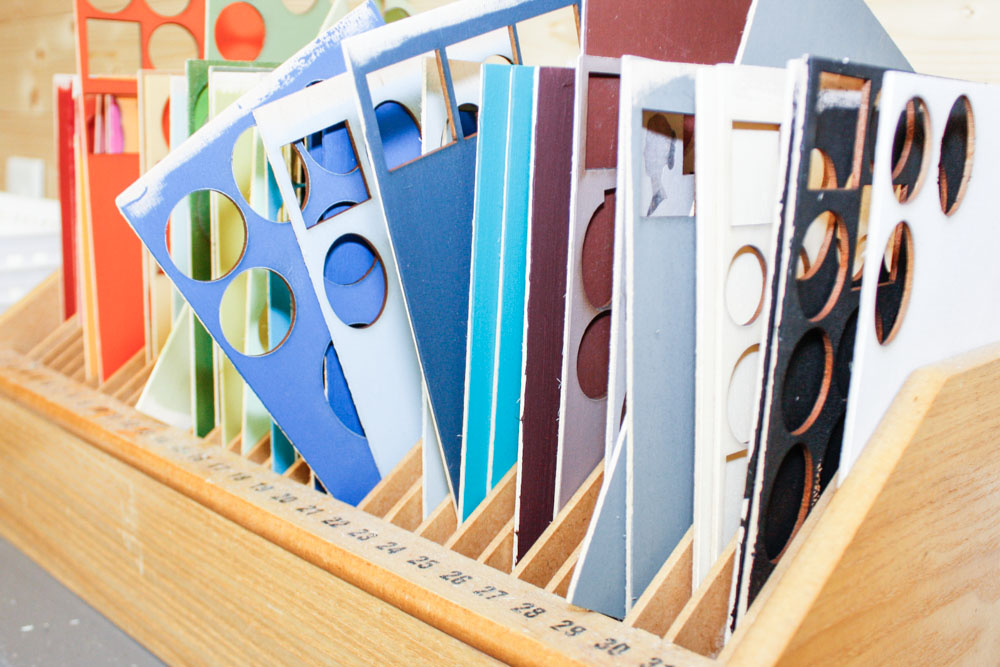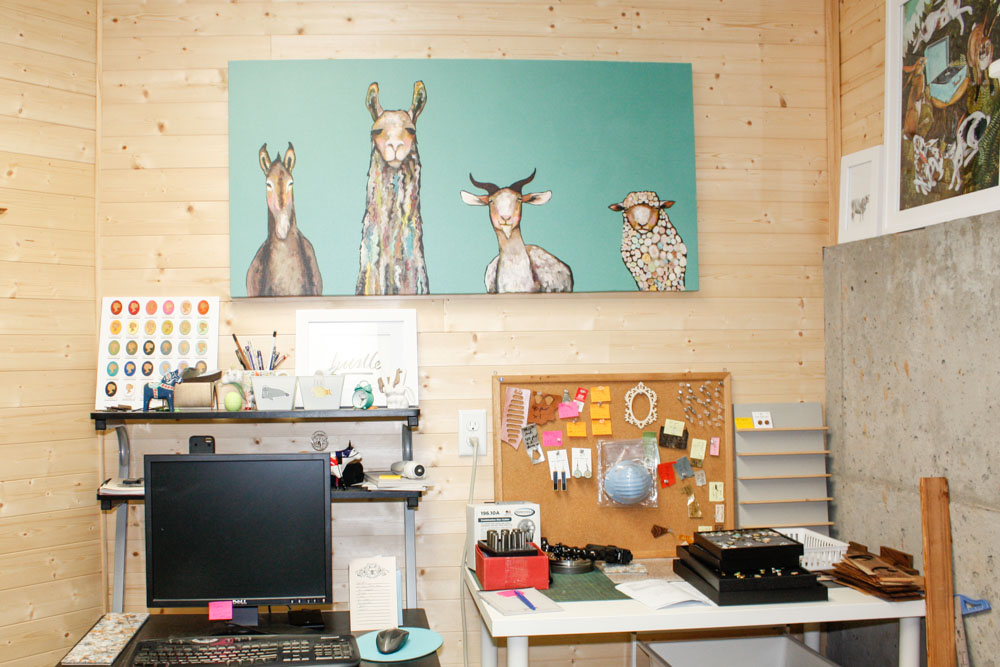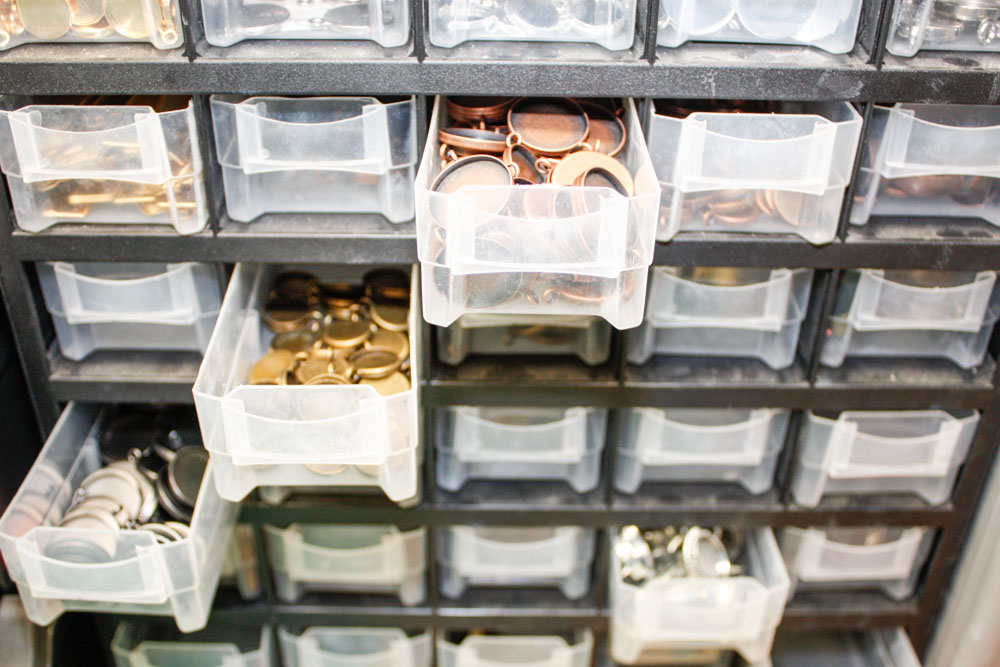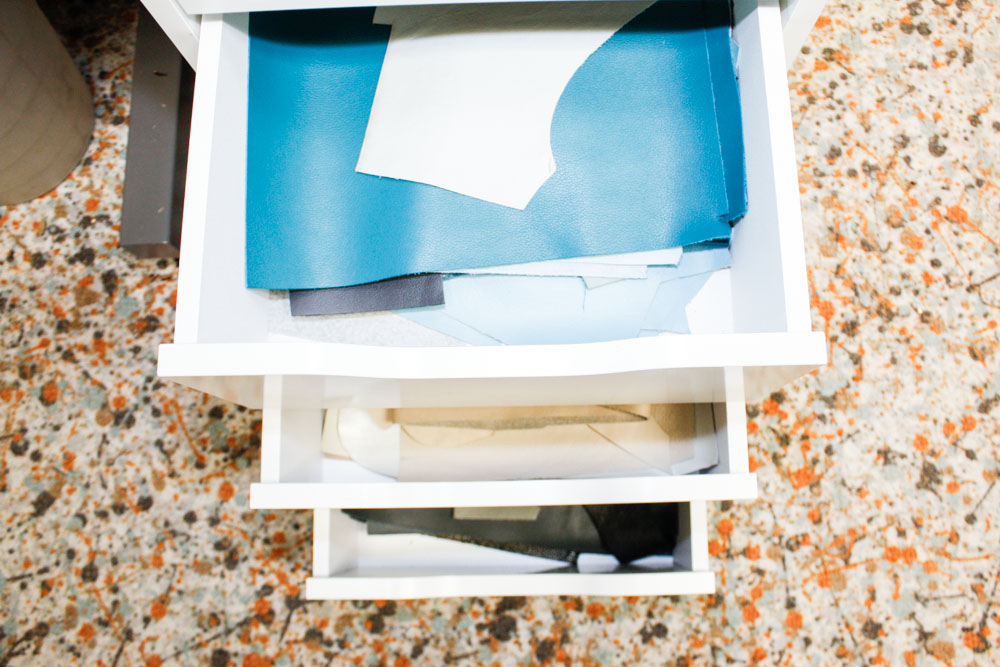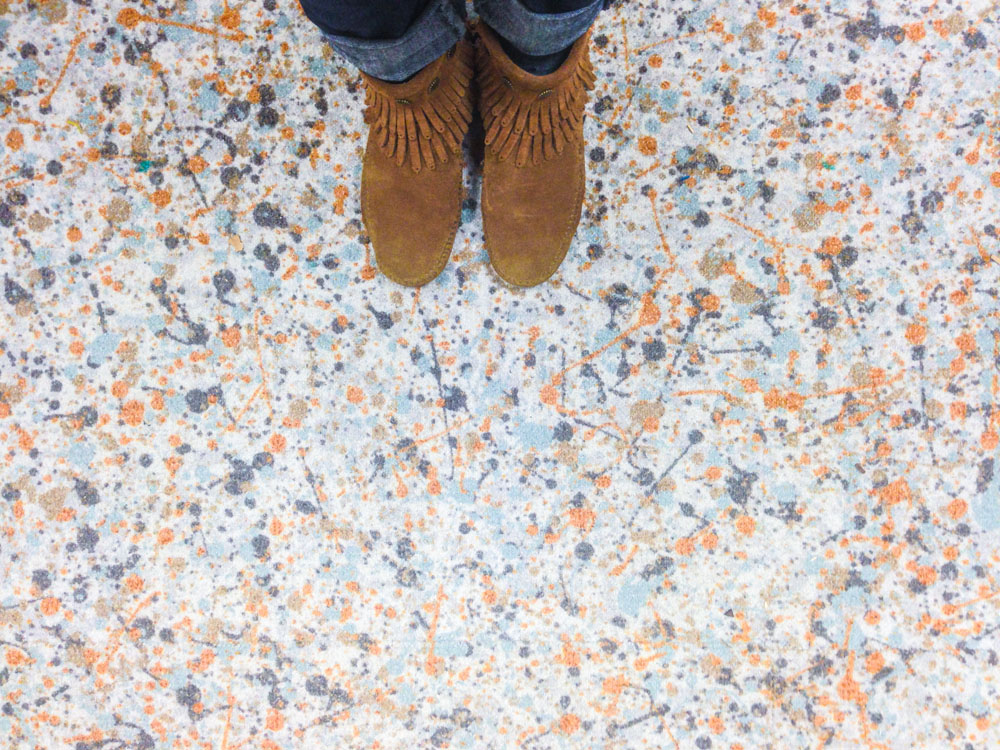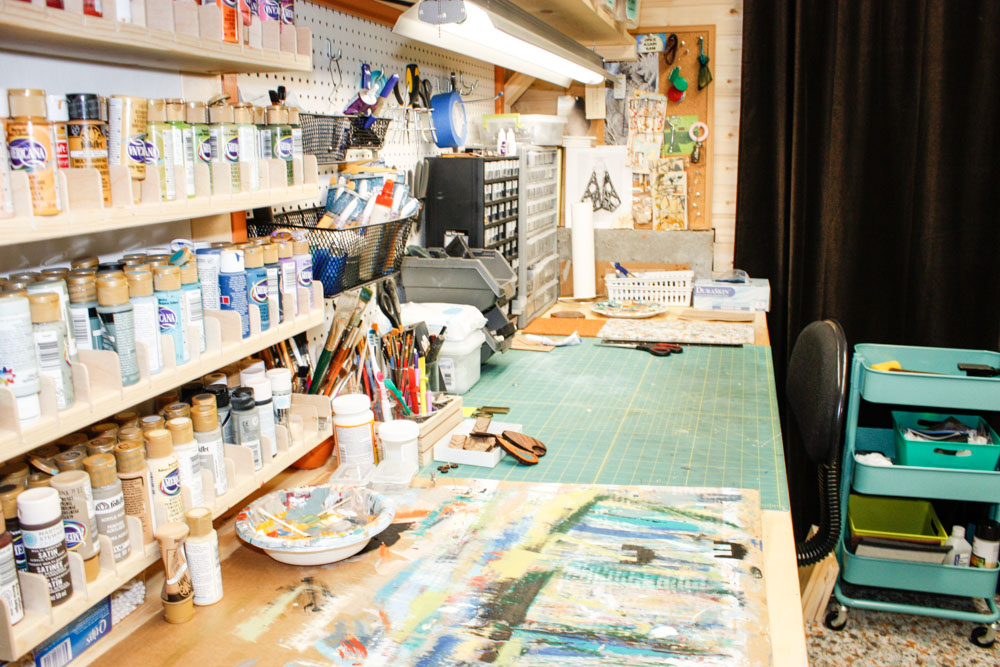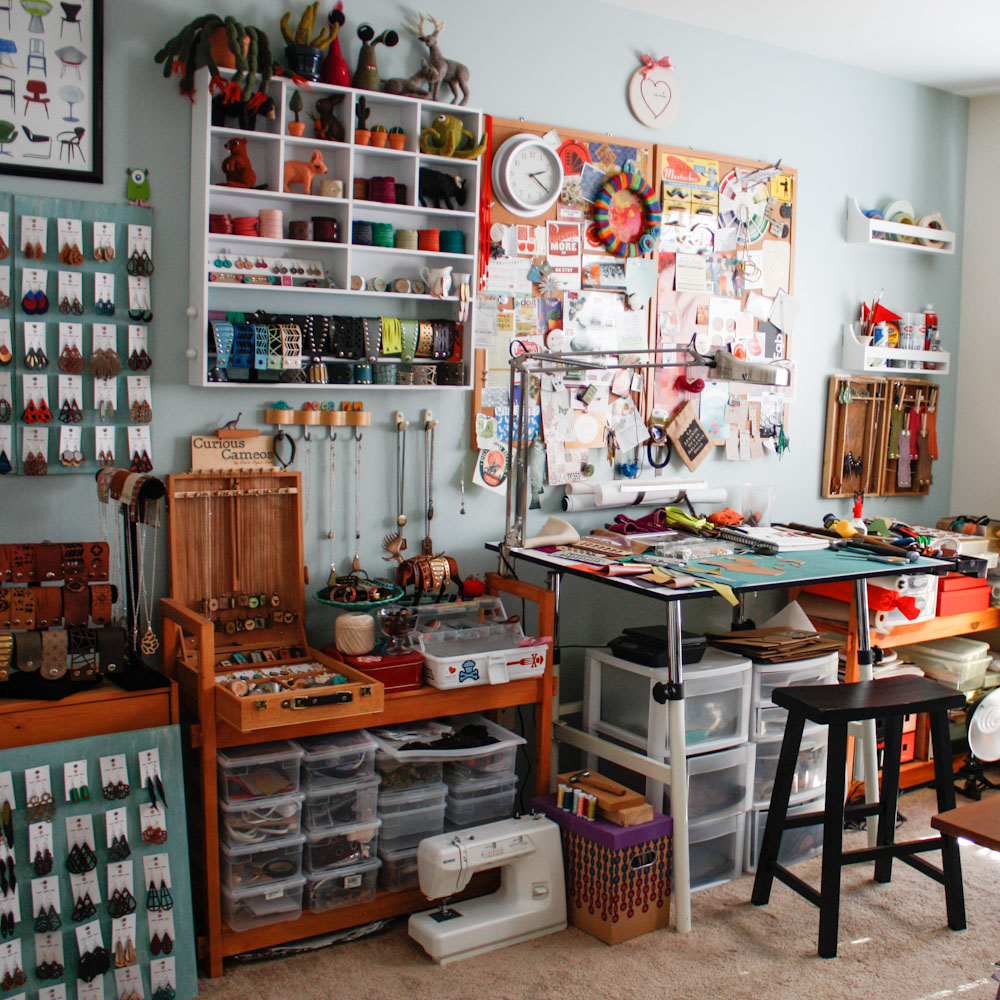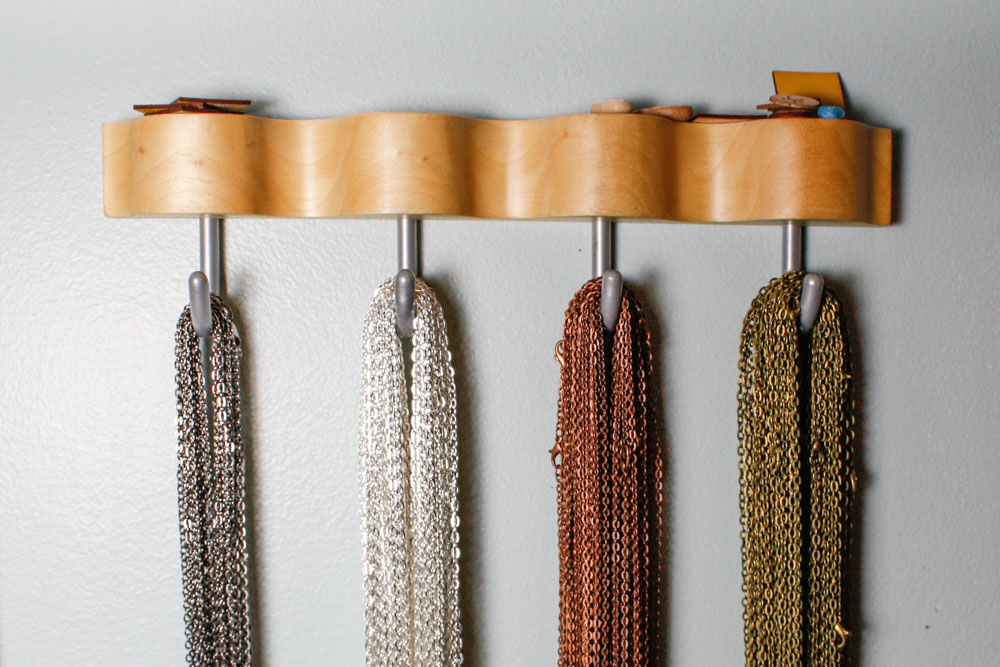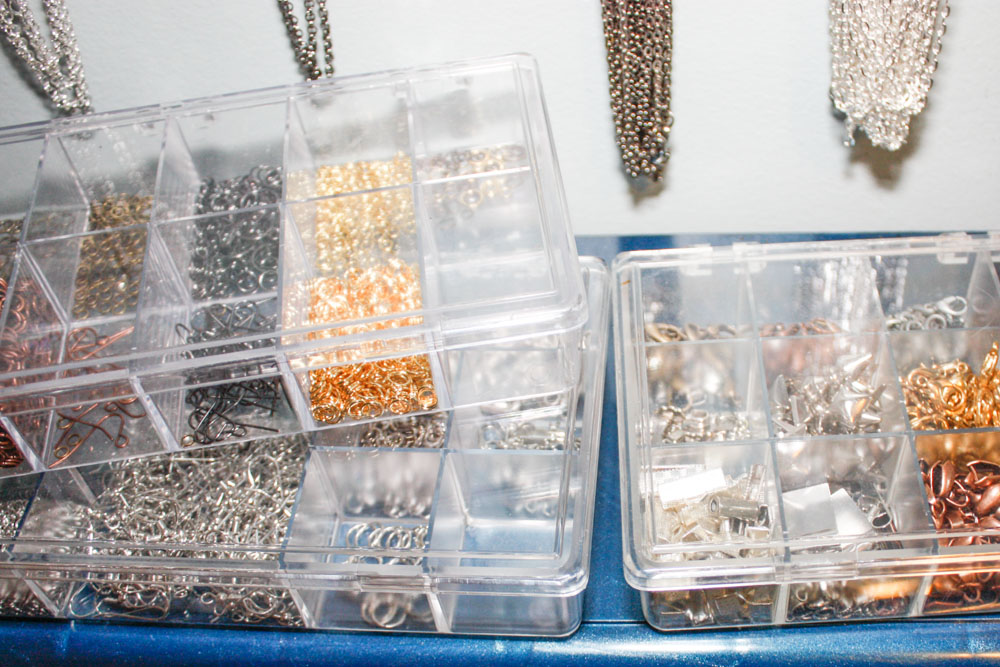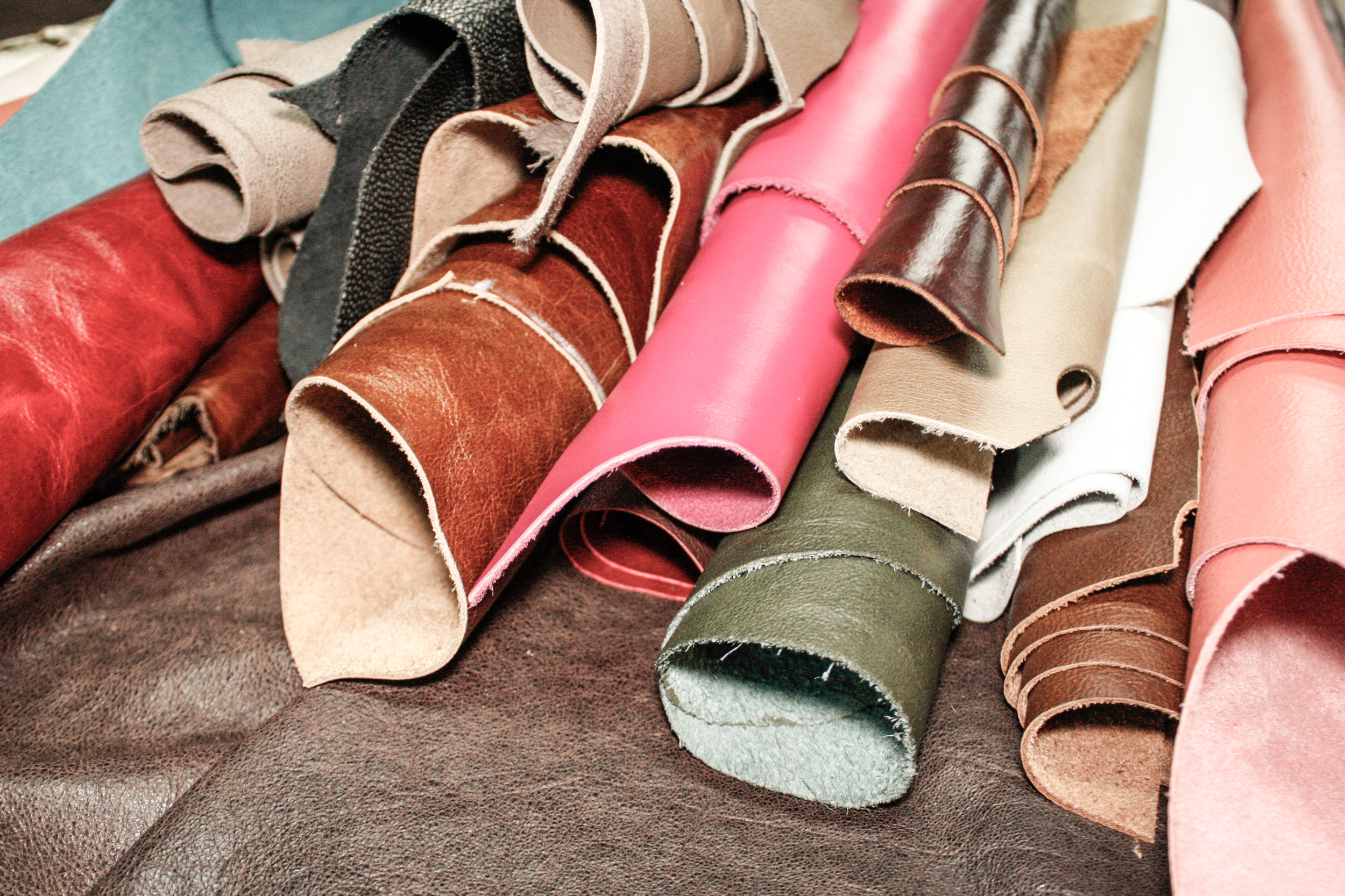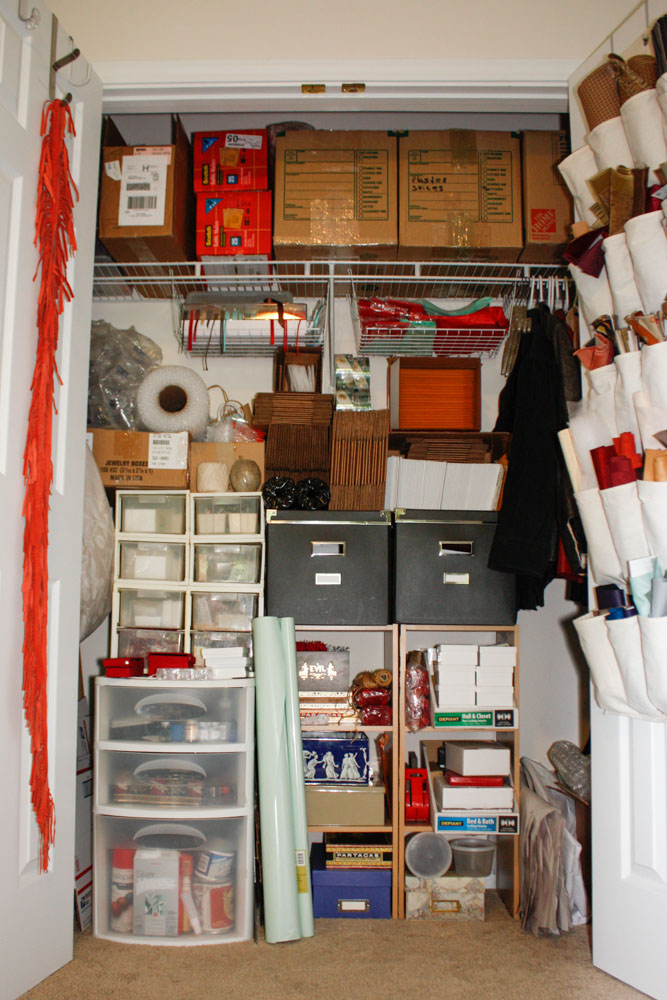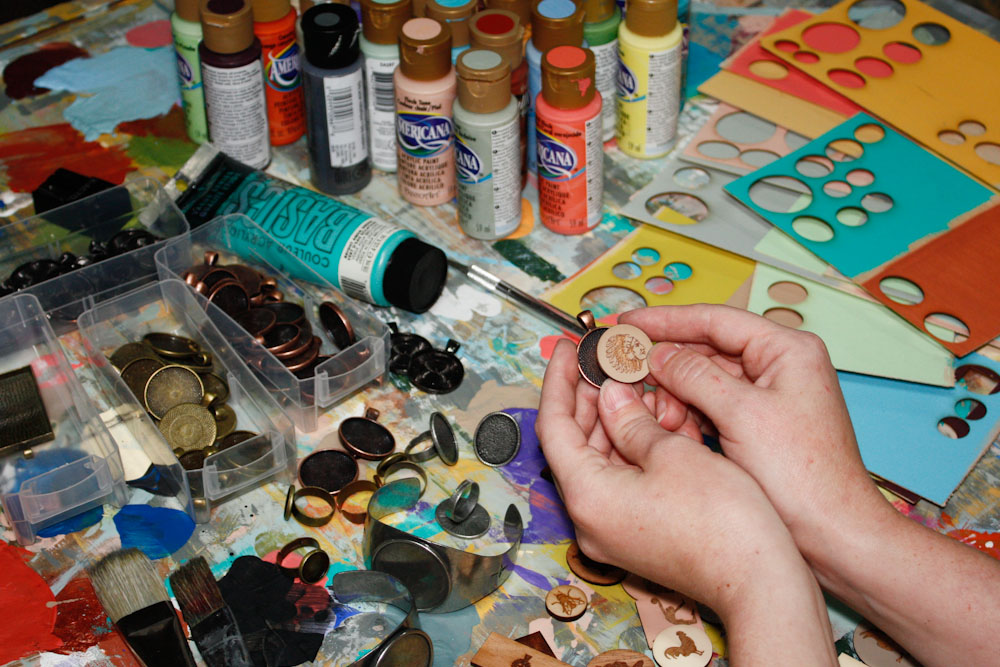The Office: Go back down one flight of stairs, and you’re in the office. It’s funny, the workshop, studio, and office are all in the same exact corner of the house, so the views are identical, just at different levels. The office is shared with my husband who works from home, and is where I do all of my correspondence, Etsy shop maintenance, photo & video editing, blogging, and accounting. Since I don’t have a physical brick & mortar store, and in-person craft shows are only seasonal, I end up doing the majority of my business from this spot in the house.
* Favorite things about this space: being near my husband. We “bother” each other a lot, but it’s actually a huge blessing. There was a time back when we lived in the DC metro area when we only saw each other about 2-3 hours a day during the week. It sucked. We have a completely different lifestyle now and I wouldn’t trade it for anything. Also, his title of “Operations Manager” is 100% accurate - he keeps the biz up and running, so it’s nice having him nearby.
The Couch: Not kidding! I spend several hours a day needle felting on the couch with some sort of nature documentary, depressing indie film, or audio book going in the background. The living room may pass for fairly normal at first glance, but if you look closer (like in the bins under the couch, the basket under the end table, in that dark wicker hamper sitting discreetly in the corner), you’ll notice there’s a whole flocks’ worth of sheep’s wool all around you. I have my roving in containers organized by color, so it’s easy to find what I need. Besides (a lot of) wool fiber, there’s really not much else needed for needle felting. I have a 2” thick foam pad that sits on my lap while I felt, a variety of needles, plus a portable work light, and that’s about it.
* Favorite things about this space: being able to learn something new / think about something else unrelated to my work, while I work. My hands may be felting, but at the same time I can be learning all about the Altiplano in South America and the fascinating flamingos that call it home, or reading / listening to The Electric Michelangelo by Sarah Hall for the 50th time.
So there you have it. The spaces where everything is handmade, by me, under one roof!


